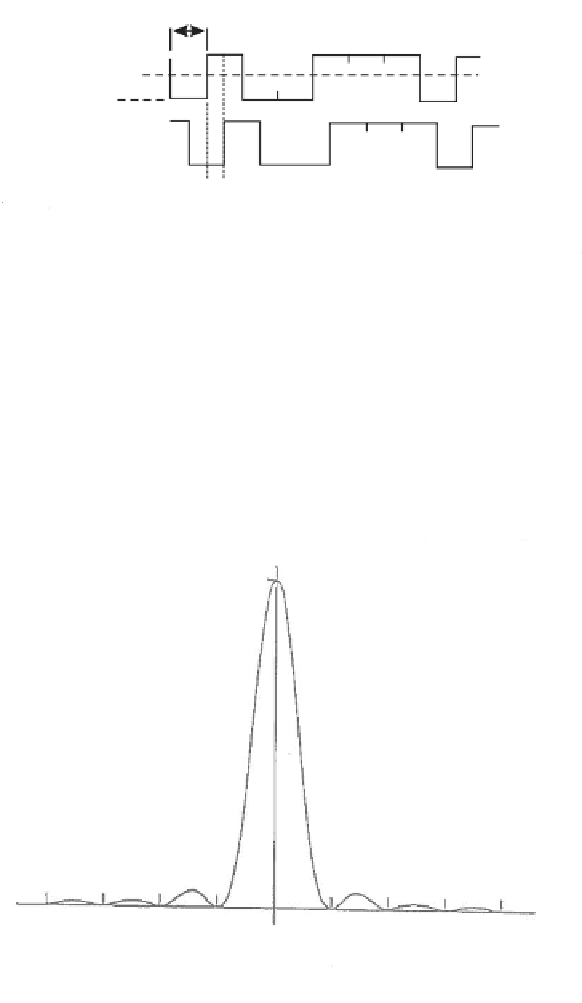Global Positioning System Reference
In-Depth Information
T
c
r(t)
A
0
−
A
r(t -
τ
t
τ
(a)
A
2
R(
τ
−
T
c
0
T
c
τ
(b)
A
2
S(
ω
c
8
π
6
π
4
π
2
π
2
π
4
π
6
π
ω
8
π
−
−
−
−
0
T
c
T
c
T
c
T
c
T
c
T
c
T
c
T
c
(c)
Figure 4.3
(a) A random binary code producing (b) the autocorrelation function, and (c) power
spectrum of a DSSS signal.
employing rectangular chips have similar autocorrelation and power spectrum
properties to those described for the random binary code case, but they employ PRN
codes that are perfectly predictable and reproducible. This is why they are called
pseudo
random codes.
To illustrate the effects of finite-length PRN codes, consider a DSSS signal with-
out data employing a PRN sequence that repeats every
N
bits. Further let us assume
that this sequence is generated using a
linear feedback shift register
that is of
maxi-

















Search WWH ::

Custom Search